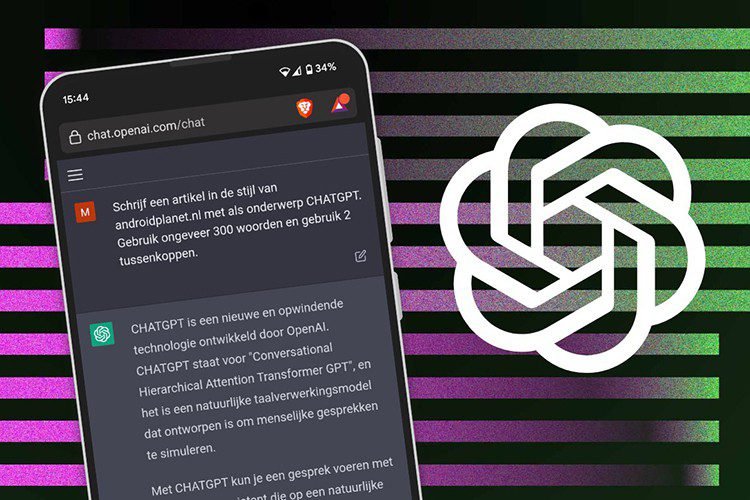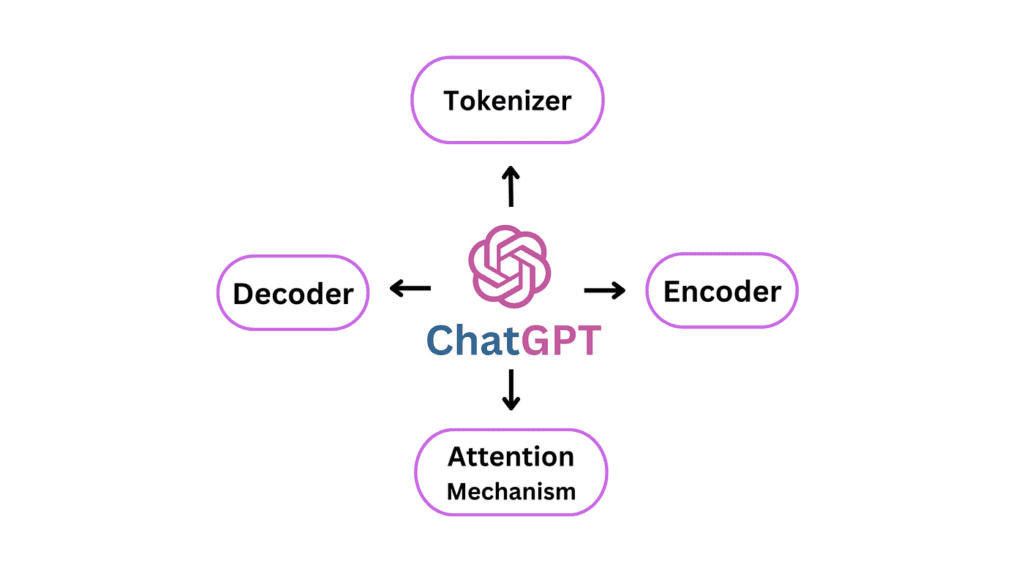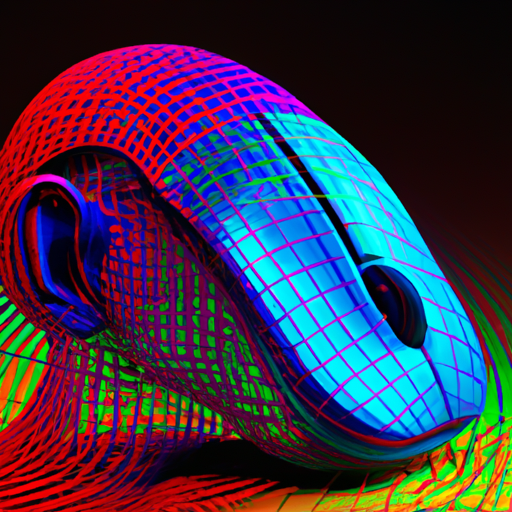


The Chatbot Evolution: Exploring The Capabilities Of ChatGPT
August 15, 2023


Unveiling The Power Of ChatGPT: How Does It Generate Human-like Text?
August 15, 2023In the ever-evolving world of artificial intelligence, one question continues to captivate our minds: Is it a human or an AI behind these impeccably crafted responses? In our exploration of ChatGPT’s intricate workings, we’ll uncover the fascinating secrets behind its ability to mimic human conversation. With a keen focus on the underlying technology and the delicately balanced blend of machine learning algorithms, we aim to unravel the magic that lies beneath ChatGPT’s seemingly human-like interactions. Prepare to be amazed as we embark on this journey to decipher the wizardry behind ChatGPT’s responses.
Heading 1: Understanding ChatGPT
Subheading 1: What is ChatGPT?
ChatGPT is an advanced language model developed by OpenAI that uses deep learning techniques to generate human-like responses in a conversational setting. It builds on the success of previous language models like GPT-3 to enable more interactive and dynamic conversations. Unlike traditional chatbots, ChatGPT does not rely on pre-defined rules or templates. Instead, it leverages a large dataset of text from the internet to generate contextually relevant and coherent responses.
Subheading 2: The technology behind ChatGPT
ChatGPT is powered by a deep-learning architecture known as a transformer. The transformer model allows for more efficient processing of contextual information by capturing relationships between words and phrases. It achieves this by employing attention mechanisms that prioritize relevant parts of the input text. This enables the model to extract meaning and generate responses that are coherent and contextually appropriate.
Subheading 3: How does ChatGPT generate responses?
ChatGPT generates responses through a two-step process: pre-training and fine-tuning. In the pre-training phase, the model is exposed to a large amount of text data from the internet to learn patterns, grammar, and common language structures. It uses unsupervised learning techniques to develop an understanding of the language.
After pre-training, the model is fine-tuned on a more specific dataset that has been carefully generated with the help of human reviewers. These reviewers provide feedback and rate model-generated responses according to several criteria such as correctness, relevance, and safety. The fine-tuning process helps to align the model’s behavior with human values and ensures that the responses are of higher quality.
Heading 2: Analyzing ChatGPT’s Responses
Subheading 1: Examining the quality of responses
Analyzing the quality of ChatGPT’s responses involves evaluating factors such as coherence, relevance, and grammaticality. While ChatGPT can generate impressive responses, it is not infallible and may sometimes produce answers that are incorrect or nonsensical. This highlights the challenges in training a language model to consistently produce high-quality responses, especially in complex conversational scenarios.
Subheading 2: Identifying human-like elements
ChatGPT has the ability to mimic human-like elements in its responses, including humor, empathy, and natural language fluency. These characteristics make interactions with ChatGPT more engaging and enjoyable for users. However, it is important to remember that at its core, ChatGPT is an algorithmic model and lacks true understanding or consciousness.
Subheading 3: Recognizing AI-driven tendencies
While ChatGPT can generate impressive responses, it is important to recognize that it is still an AI-driven model and has certain tendencies. For example, it can be overly verbose, provide excessively detailed answers, or exhibit repetitive behavior. These tendencies demonstrate the limitations and biases that can emerge from training a model with vast amounts of internet text.
Heading 3: Human Evaluation vs. AI Evaluation
Subheading 1: The role of human evaluators
Human evaluators play a crucial role in the development and improvement of ChatGPT. Their expertise and judgments are used to fine-tune the model through the evaluation of generated responses. Evaluators provide feedback and rate the quality of responses based on specific criteria set by OpenAI. This iterative process helps to align the model’s outputs with human values and ensure that it generates useful and safe responses.
Subheading 2: Challenges in evaluating AI responses
Evaluating AI responses presents unique challenges. Since there is no one correct answer in many conversational scenarios, it can be difficult to objectively assess the quality of responses. Additionally, different evaluators may have varying opinions on what constitutes a good response. These challenges require careful consideration and the development of robust evaluation methodologies to ensure consistent and reliable assessments.
Subheading 3: Bias and ethical concerns
Evaluating AI responses also raises important ethical concerns surrounding biases. Biases can inadvertently arise in the model’s responses due to biases in the training data it learns from. It is essential to have diverse and representative training data, as well as rigorous evaluation processes, to mitigate these biases. OpenAI recognizes the importance of addressing biases and is actively working towards improving the fairness and inclusivity of ChatGPT.
Heading 4: The Fine Line Between Human and AI
Subheading 1: Uncovering AI hallmarks
While ChatGPT can generate impressive responses, there are distinctive hallmarks that differentiate it from human intelligence. For example, ChatGPT lacks common sense reasoning, genuine understanding of context, and the ability to apply real-world knowledge in a practical manner. These limitations highlight the need for careful consideration when interacting with AI-driven systems like ChatGPT.
Subheading 2: The limitations of AI
Artificial intelligence, including models like ChatGPT, has inherent limitations. It can provide answers based on available data, but it cannot possess real emotions, truly comprehend nuances, or exhibit consciousness. AI systems are powerful tools that can assist users in generating responses, but they should not be seen as replacements for human judgment or expertise.
Subheading 3: The extent of human involvement
The development and fine-tuning of ChatGPT involve extensive human involvement. From dataset curation and model review to feedback from human evaluators, human judgment is an integral part of the process. OpenAI recognizes the importance of balancing AI capabilities with human oversight and aims to continuously seek public input and collaboration to make responsible decisions about system behavior.


Heading 5: ChatGPT’s Dataset and Training
Subheading 1: Data sources and diversity
ChatGPT’s dataset is derived from a wide range of sources on the internet, which allows it to learn from various perspectives and writing styles. This diverse input helps to capture different contexts and enables the generation of more contextually appropriate responses. OpenAI focuses on continuously improving the dataset to reduce biases and increase inclusivity.
Subheading 2: Pre-training and fine-tuning
The training of ChatGPT involves two main stages: pre-training and fine-tuning. During pre-training, the model learns from a vast corpus of publicly available text from the internet. This process enables the model to acquire a foundational understanding of language. In the fine-tuning stage, the model is trained on a more specific dataset generated with the help of human reviewers. This iterative feedback loop refines the model’s behavior and aligns it with human values.
Subheading 3: Dataset influence on responses
The dataset used to train ChatGPT has a significant influence on its responses. Since it learns from publicly available text, including books, articles, and websites, biases present in the data can be reflected in the model’s responses. OpenAI is committed to addressing these biases and improving the dataset to ensure fair and unbiased interactions with ChatGPT.
Heading 6: Addressing Biases in ChatGPT
Subheading 1: Biases inherited from training data
ChatGPT can inadvertently exhibit biases inherited from the training data it learns from. This can be a result of biases in the text found on the internet, as well as the training process itself. OpenAI acknowledges the importance of reducing biases and is actively working on refining the training pipeline to improve the fairness and inclusivity of ChatGPT.
Subheading 2: Efforts in bias mitigation
OpenAI is actively taking measures to mitigate biases in ChatGPT’s responses. This includes investing in research and engineering to reduce both obvious and subtle biases. They are also exploring ways to improve guidelines for human reviewers to ensure a more balanced and inclusive approach during the fine-tuning process. OpenAI is committed to transparency and welcomes external input to hold them accountable in this important endeavor.
Subheading 3: Ongoing challenges
Addressing biases in AI systems like ChatGPT poses ongoing challenges. Given the complexity of language and the diverse range of perspectives, achieving complete elimination of biases is an ambitious goal. However, OpenAI is dedicated to continuous improvement and actively seeks public input and collaboration to ensure a more fair and unbiased deployment of AI systems.


Heading 7: Transparency and Explainability
Subheading 1: Unveiling the decision-making process
Transparency in the decision-making process of AI systems is vital for building trust and understanding. OpenAI is committed to providing insight into the workings of ChatGPT, including the design choices, training methodologies, and the use of human feedback. By sharing these details, OpenAI aims to foster an open dialogue and create a better understanding of AI systems among users and the wider public.
Subheading 2: Tools for transparency and traceability
OpenAI recognizes the need for tools and mechanisms that enable users to understand and trace the decision-making process of ChatGPT. They are actively working on providing access to model-generated explanations, allowing users to understand how and why certain responses are generated. By empowering users with transparency, OpenAI aims to ensure responsible and accountable use of AI systems.
Subheading 3: Balancing explainability and performance
Striking a balance between explainability and performance is an ongoing challenge in the field of AI. While it is important to provide insights into the decision-making process, excessive explainability may result in sacrificing performance. OpenAI is dedicated to finding the right balance, where the system’s behavior is understandable and predictable, while still providing high-quality responses.
Heading 8: Improving ChatGPT’s Responses
Subheading 1: User feedback and iterative improvements
User feedback plays a crucial role in improving ChatGPT’s responses. OpenAI encourages users to provide feedback on problematic model outputs through the user interface. This feedback helps OpenAI to identify areas of improvement and further refine the model. The iterative feedback loop between users and developers is instrumental in enhancing the overall user experience.
Subheading 2: Incorporating context and user intent
Enhancing the understanding of context and user intent is a key focus in improving ChatGPT’s responses. OpenAI aims to refine the model’s ability to maintain context over longer conversations and provide more accurate and relevant responses. Incorporating user intent into the response generation process will enable ChatGPT to deliver personalized and contextually appropriate interactions.
Subheading 3: Enhancing natural language understanding
Improving ChatGPT’s natural language understanding is an ongoing area of research and development. OpenAI is investing in techniques that enable the model to grasp nuanced language concepts and infer meaning from subtle cues. By enhancing natural language understanding, ChatGPT can generate responses that reflect a deeper comprehension of user inputs and provide more accurate and insightful answers.


Heading 9: The Future of ChatGPT and AI-driven Conversations
Subheading 1: Potential applications of ChatGPT
ChatGPT has numerous potential applications across various domains. It can be utilized for Customer Support, content creation, language translation, and more. The versatility and adaptability of ChatGPT’s underlying technology allow for customization and integration into a wide range of systems and services. As the technology continues to evolve, ChatGPT could play an increasingly integral role in augmenting human productivity and enhancing user experiences.
Subheading 2: Ethical considerations for deploying AI-driven chatbots
The deployment of AI-driven chatbots, including ChatGPT, raises important ethical considerations. It is crucial to ensure the responsible use of such technology, including addressing biases, ensuring transparency, and fostering user trust. Organizations need to establish clear guidelines and oversight mechanisms to govern the behavior of AI systems. OpenAI advocates for collaboration and consultation with the wider public to inform the decision-making processes and to navigate complex ethical challenges.
Subheading 3: Advancements in conversational AI
The field of conversational AI is rapidly advancing, and ChatGPT represents a significant step forward in natural language processing. As researchers and developers continue to innovate in this domain, future iterations of ChatGPT may exhibit increased capabilities and improvements in response generation. OpenAI remains committed to pushing the boundaries of language models while incorporating feedback and addressing concerns to ensure the responsible development and deployment of AI-driven conversational systems.
Heading 10: Conclusion
Subheading 1: Recap of ChatGPT’s capabilities
ChatGPT is an advanced language model developed by OpenAI that leverages deep learning techniques to generate human-like responses in real-time conversations. It uses a transformer-based architecture and is trained through a two-step process of pre-training and fine-tuning. ChatGPT’s responses are evaluated for quality, coherence, and relevance, but it still has limitations and biases inherited from training data.
Subheading 2: Importance of understanding the AI-human boundary
Understanding the boundary between AI and human intelligence is crucial when interacting with systems like ChatGPT. While ChatGPT can generate impressive responses, it is important to recognize its inherent limitations and the need for human judgment and expertise in complex scenarios. Transparency, explainability, and addressing biases are essential for building trust and ensuring responsible use of AI systems.
Subheading 3: Looking ahead to new breakthroughs
The future of ChatGPT and AI-driven conversations holds tremendous potential. OpenAI’s commitment to refinement, transparency, and collaboration will continue to shape the development and deployment of AI systems. As advancements in conversational AI continue, it is vital to prioritize ethical considerations, ensure fairness, and foster user trust. By working together, we can unlock the true value and benefits of AI technology while navigating the complex challenges that lie ahead.





